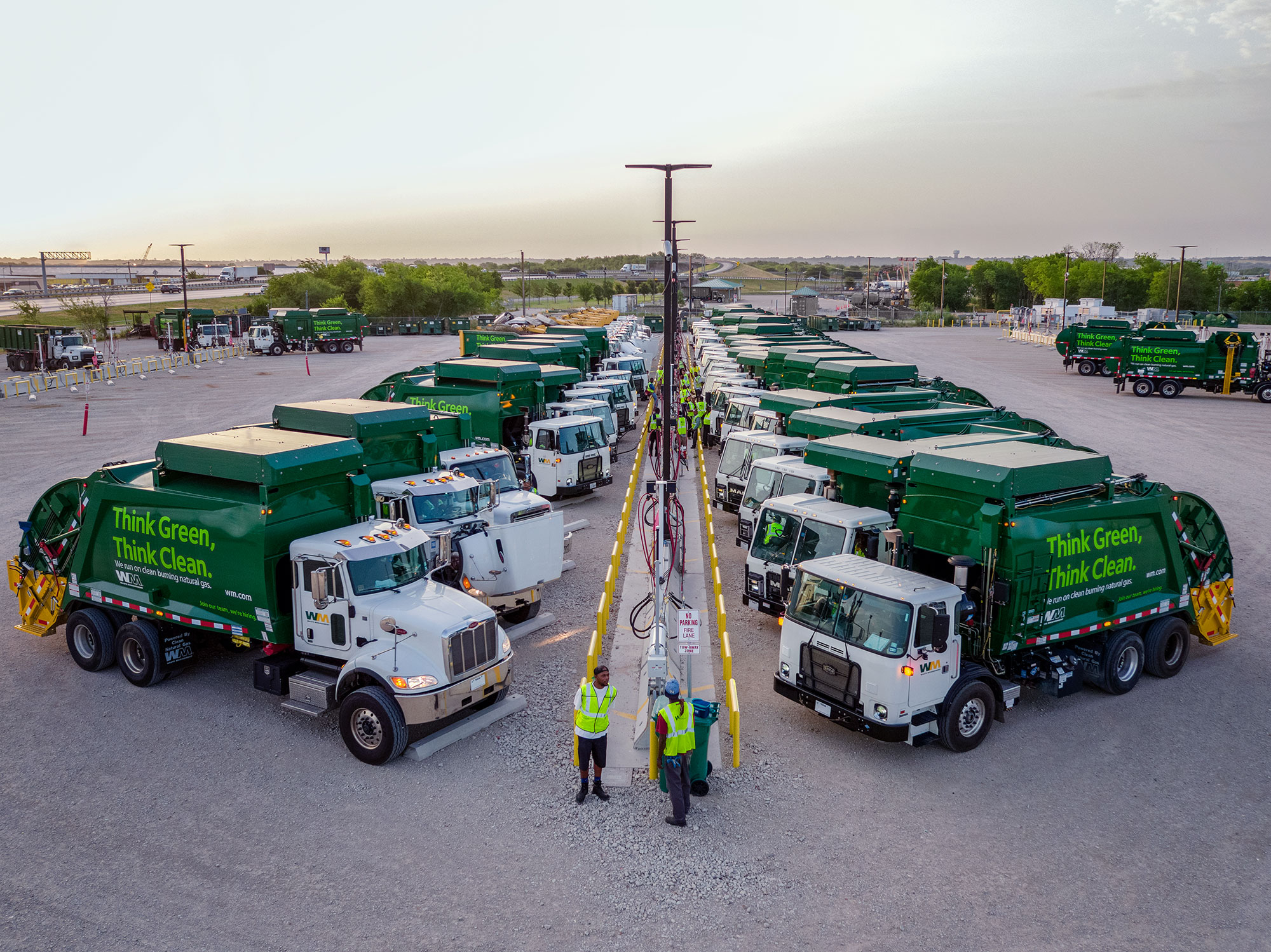
- Sustainability A-Z
- GHG Emissions Inventory Calculation Methodology
GHG Emissions Inventory Calculation Methodology
WM’s carbon footprint comprises the anthropogenic Scope 1 (direct) and Scope 2 (indirect) greenhouse gas (GHG) emissions from facilities and activities under our operational control in North America as well as Scope 3 (indirect) GHG emissions.
- Scope 1 emissions include direct emissions from landfills, collection fleet and support vehicles, heating and refrigerants.
- Scope 2 emissions include indirect emissions from purchased electricity.
- Scope 3 emissions include purchased goods and services, capital goods, business travel, employee commuting, upstream and downstream leased assets, use of sold products, third party transport and investments.
For our most recent GHG emissions inventory please see our Sustainability Data Center, Annual Sustainability Report or Climate Brief/TCFD.
Methodology
Our carbon footprint calculation relies on company operating data collected from auditable corporate business, legal and accounting records, which have undergone internal quality assurance.
WM's inventory is calculated in line with GHG Protocols and utilizes best practice methodologies and emissions factors from leading organizations such as the U.S. Environmental Protection Agency (EPA), The Climate Registry, the U.S. Department of Energy, and others.
WM, along with other public and private owners and operators of landfills, supported the development of the Solid Waste Industry for Climate Solutions (SWICS) protocol by SCS Engineers. The protocol represents a first step in refining existing U.S. EPA models and protocols using peer-reviewed, published research to improve landfill GHG emission estimation. We employed the SWICS protocol in estimating the emissions associated with the landfill operations reported in our company-wide carbon footprint and the voluntary GHG reporting protocols in which we participate. The U.S. EPA’s Science Advisory Board views some sources of biogenic carbon dioxide emissions — including landfill gas and biogenic materials in waste—as carbon neutral.
Carbon storage in landfills can significantly offset GHG emissions from landfills, as recognized by the United Nations Intergovernmental Panel on Climate Change (IPCC), the EPA’s U.S. Inventory of GHG Emissions and Sinks, the Oregon Climate Trust and the California Air Resources Board (CARB) — all of which recognize carbon storage in landfilled material as a “sink” in calculating carbon emissions inventories. We have used the SWICS protocol to calculate the amount of carbon permanently stored in landfills from the annual disposal of organic waste — i.e., carbon that will not decompose in the landfill to produce GHG emissions.
Additionally, WM has developed and maintained an annual GHG Inventory Management Plan (IMP) as an internal governance and controls document. The IMP is a dynamic document to provide WM with a summary of emission sources associated with the company’s activities, and the associated emissions quantified using standardized methods. Included in the inventory are processes for:
- Choosing a base year for the GHG emissions inventory against which future emissions will be tracked
- Identifying the sites to include in the inventory (organizational boundaries)
- Identifying the sources within the sites to include in the inventory (operational boundaries)
- Following a standardized and accepted methodology to calculate the GHG emissions from each identified source
Our GHG inventory reflects the most accurate means available to calculate GHG emissions within our industry sector. We work with leaders in government, industry and academia, including staff of the multistate Climate Registry and the U.S. EPA, to develop our inventory processes and protocols.
Data Verification and Validation
We participate in multiple forms of data verification. First, in conformance with applicable state or provincial GHG emissions reporting programs, an independent third party is hired to review original data and provide a verification certificate. Accordingly, the emissions from the landfill subject to the Alberta Provincial Specified Gas Emitters Regulatory Reporting Program are third-party verified. Emissions from landfills subject to State of California mandatory reporting program are also third-party verified. Our facilities are subject to the federal Mandatory GHG Reporting Rule, and they are subject to rigorous validation checks by U.S. EPA as part of its compliance assurance and enforcement program for the reporting rule.
These verifications are conducted in accordance with ISO 14064–3:2006 specification with guidance for validation and verification of GHG assertions to provide limited assurance that the Scope 1, Scope 2 and Scope 3 GHG data was prepared in conformance with World Resource Institute (WRI) and World Business Council for Sustainable Development (WBCSD) GHG Protocol: A Corporate Accounting and Reporting Standard and the internal WM IMP.
In a second form of data validation, we report to a third party, such as a government-affiliated data tracking program, which provides quality assurance and quality control to the data but does not provide a verification certificate.
Further, WM has contracted with an enterprise-wide utility bill management (UBM) program to collect and pay utility invoices, as well as to track usage data. Information from the UBM program is audited prior to bill redirection by WM to ensure correct processing of all future invoices. We review data through the UBM online dashboard and have the capability to run reports on consumption, cost and GHG emissions on a facility, region, division, country and enterprise-wide basis.
Avoided Emissions
Our calculations of the potential GHG reductions or avoided emissions that our operations enables include the following:
Renewable Energy Generation: Production of renewable energy from landfill gas.
Reuse & Recycling of Materials: Recycling of postconsumer materials (e.g., paper, aluminum and plastics) using U.S. EPA’s Waste Reduction Model (WARM).
Carbon Sequestration: Permanent carbon storage in landfills of biogenic materials that do not decompose in an anaerobic landfill environment.
For the most current avoided GHG emissions inventory, please see the GHG Emissions section of our Sustainability Data Center.